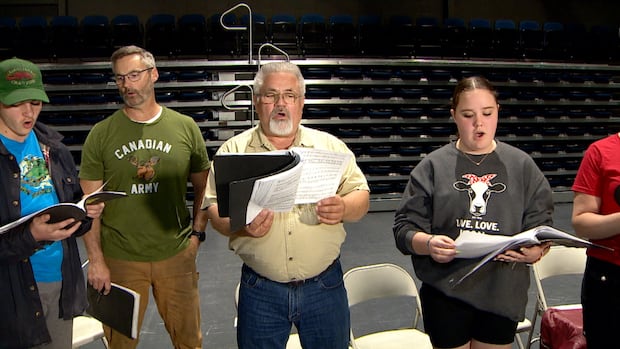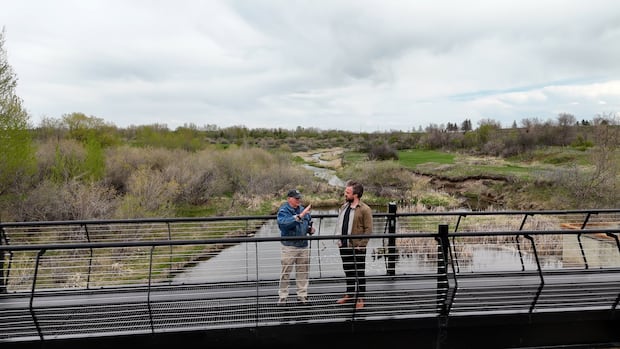In an auditorium at the Magrath Junior Senior High School in the town of Magrath, Alta., on a rainy Monday evening, metal chairs are arranged in a circle, a grand piano at its apex.
Slowly, people begin to file in. It’s the start of rehearsals for a musical production titled Diggers, based on the founding of Magrath in 1899 by settlers sent by the Church of Jesus Christ of Latter-day Saints from Utah and Idaho to construct irrigation projects in southern Alberta.
“Let’s start at bar 78,” says Mark Mitchell, the composer of Diggers, as some of the actors paw through their individual songbooks for the first time. They’re in the midst of rehearsing a hymn-like song, God Be With Them, focused on the men from Utah saying goodbye to their families before heading north.
Mitchell plays a few keys at the piano and launches into another song, the whimsical I See A Place (Levi’s vision).
“I saw a place: God-blessed and beautiful as love’s own pleasant face, sun-kissed and settled in this curve and coil of earth,” Mitchell sings in a baritone voice.
“I saw a place. I saw fair fields: dew-dressed and nestled in the promise of a yield.”

Diggers centres on famous stories in the Mormon church in Canada, including that of Levi Harker, an early pioneer from Utah who went on to become Magrath’s first bishop and was the town’s mayor for two terms.
On its website, the LDS church quotes a 1939 Lethbridge Herald article, written after Harker’s death in 1939. It states: “No man who ever lived in [Magrath] was more deeply mourned than that of Bishop Levi Harker, ‘Father of Magrath.'”
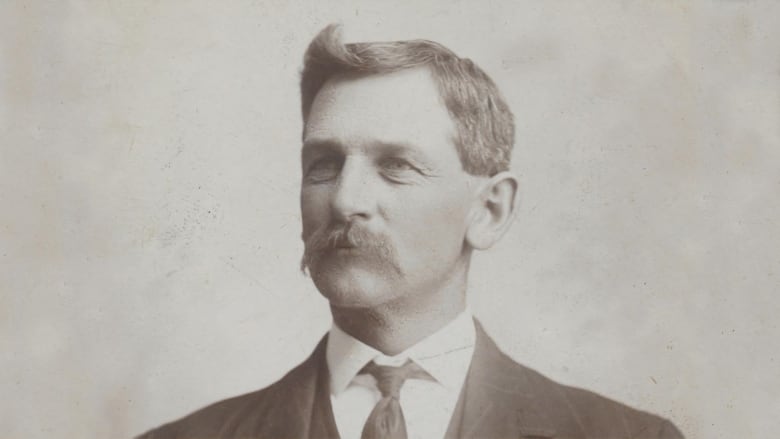
The Ottawa-raised Mitchell, who has a doctorate in composition and has written five musicals before, is a member of the church. Though he lived far from Magrath, he knew the story of Harker well.
“He came over the Milk River Ridge and had this vision. That’s the music I was playing,” Mitchell said.
“It’s the song of his vision, of seeing the modern day Magrath, when there was nothing there but grass … all of a sudden, he saw cultivated farms and irrigation canals and a town that was thriving. And he never forgot that.”
WATCH | Diggers play tells story of early Mormon settlers:
Diggers, being put on by the Magrath Arts Society for the 125th anniversary of the founding of Magrath, Alta., held rehearsals on a rainy Monday evening at the Magrath Junior Senior High School.
Dennis Strong is a descendant of Harker and plays him in the production.
“He looked to the north, and saw a vision of the town.… It gives me chills, just thinking about it, actually,” Strong said.
“I try to visualize what it would have looked like without fence posts and power lines, just like he did. It’s just awe-inspiring to look over and see what effort it took to turn the place into what it is today.”

The strong community ties to this story, and to the water that made it possible, are evident everywhere in Magrath.
And ties like these are part of why any conversation around the future of Alberta’s water is more complicated than it might appear at first blush.
‘It’s part of our heart here’
Magrath, located 25 kilometres south of Lethbridge, is situated within Palliser’s Triangle, a large area of semi-arid land that runs across southeast Alberta, much of southern Saskatchewan, as well as southwest Manitoba.
In the late 1890s, the Alberta Railway and Irrigation Company recruited Mormon settlers, known for their irrigation work in Utah and Idaho, to revive what were then bleak agricultural prospects.
In exchange for establishing what were the first major irrigation projects in Canada, the Mormon settlers received cash and land in the town.
Much like Stirling and Cardson, other early rural Alberta communities with strong ties to the LDS church, Magrath still bears the fingerprints of those early settlers.
The community was built based on the “Plat of Zion” model devised by Joseph Smith, the founder of the LDS church, emphasizing wide roads in a grid system. Today, Magrath, Cardston, Raymond and Stirling make up what’s known as Canada’s Mormon Trail.
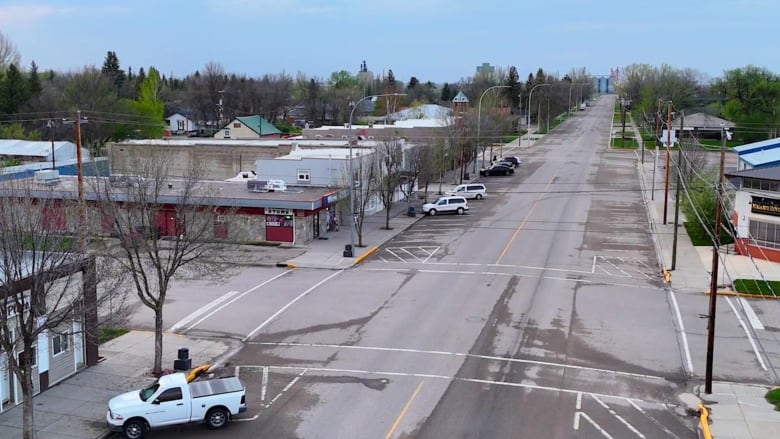
Today, visitors to Magrath can still visit the original wooden piers that make up the historic canal constructed as a result of that arrangement, completed using horses and slip scrapers.
Standing with a clear view of the structure, Harker’s great-grandson Brook Harker feels the history of this area, one he’s intimately familiar with. When he was younger, he’d walk the canal every day.
“I did not appreciate, as a young man, the amount of work that was required to get this here in the first place. I’m not sure I appreciate it today,” he said.
WATCH | A trip to the historic Magrath irrigation canal:
Brook Harker is the great-grandson of Levi Harker, an early pioneer from Utah. He outlined the history of irrigation in the region, and why there’s no “sense of entitlement” among those who live in the region today.
There’s something one needs to understand about the town of Magrath, in Harker’s view.
“The town of Magrath was established by people who believe in God. And they believe that areas that were dry could be made to blossom as a rose. And so they came into this area not because they wanted to, but because they thought they ought to,” Harker said.
“I know that southern Alberta would not be what it is if it was not for the fact that we’ve somehow managed to harness and bring water to an area that needed it.”
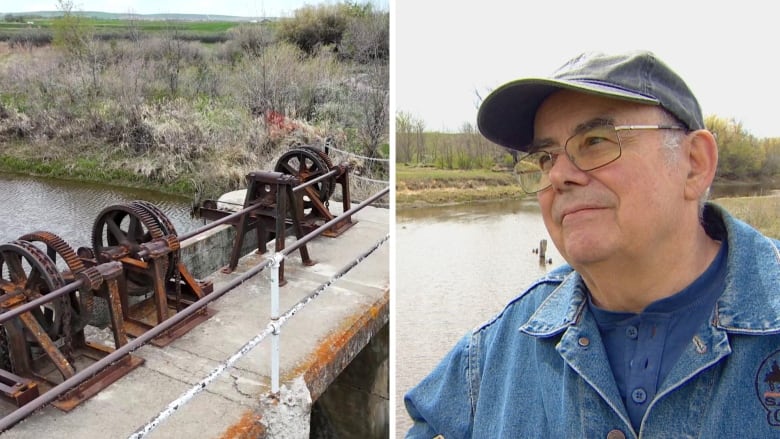
Diggers, being put on for the community’s 125th anniversary, signals how cherished this history is to the town.
It’s also front and centre on a crest fixed to the town’s welcome sign, a date below a sunrise and green rolling hills. That date, 1899, is listed on of the water licences still held by the Magrath Irrigation District.
It’s not just the length of time that has passed that makes that date significant. It’s also important because of the way the province’s water priority system works.
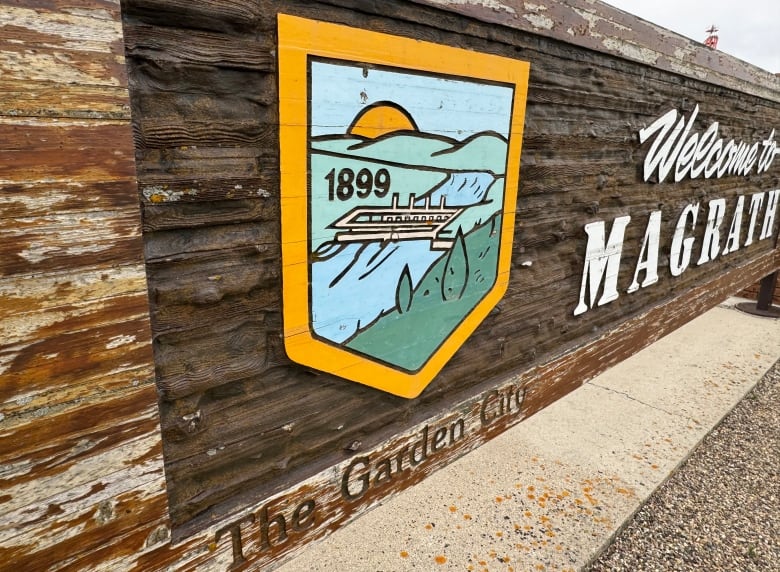
In Alberta, water licences are required for anyone seeking to use or divert groundwater or surface water. Since 1894, Alberta has operated a system dubbed “first in time, first in right,” or FITFIR, based on seniority.
It means those who received rights to water first — for instance, in Magrath in 1899 — have first claims on Alberta’s water, compared to someone who received their licence in 1999.
“We give lots of resource rights on a first-come, first-serve basis. Mining claims are the classic example. If you came up first, it’s yours,” said David Percy, an expert in water law at the University of Alberta.
“It’s not a perfect system. But it’s harder to find another system which is more defensible.”
Percy knows the issues intimately. He was a member of the drafting committee for Alberta’s Water Act, which created a framework for managing water in the province.
One of the reasons that many early licencees are challenging to deal with is that they regard licences as their birthright, he said.
“It’s very hard for the government to deal with them in any way which might change them,” Percy said.
“Some licencees are unwilling to trade even a portion of their water allocations, even if they could make money from it, because of the fact that they think it’s the foundation of their community.”
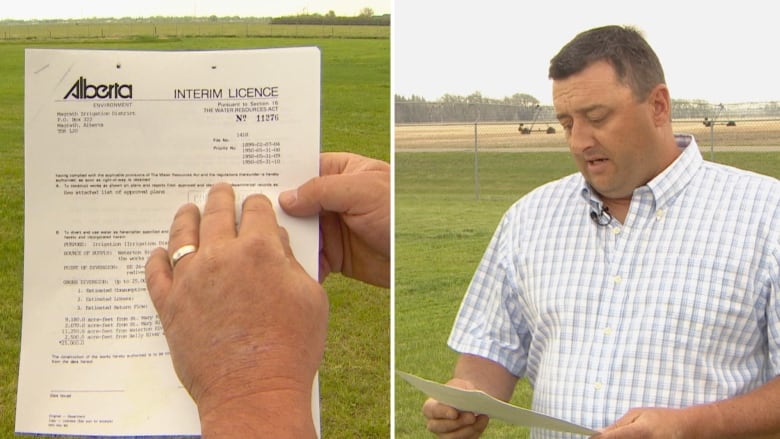
The Magrath Irrigation District has five licences, including one from 1899 — one of the oldest in the province.
Like many in Magrath, Cam Anderson, manager for the Magrath Irrigation District, credits the community’s very existence to the advent of irrigation. When he holds the licence in his hand, he recognizes its significance.
“It’s part of our heart here. It’s a big part of everybody in this area. We really, truly respect it,” he said.
125 years later…
Alberta’s priority system has posed concerns from some, who worry about how it could bend or break if drought conditions in southern Alberta worsen over the long-term, leaving communities with senior licences with water and those with junior licences without.
The concept of seniority, though it traces back a century, is a contemporary concern given Alberta’s finite water supply and changing economic priorities, said Stewart Rood, a research professor of environmental science at the University of Lethbridge.
“Some of the new junior licences are very essential. The priorities of a century ago don’t match the priorities of today,” Rood said.
Take, for instance, the massive Lamb Weston potato processing plant near Taber, Alta., which holds a relatively junior water licence. Cutting off its water supply in southern Alberta would be counterintuitive for farmers who grow potatoes using irrigation with more senior water licences.

That’s the downside of the system as it exists today, according to Percy. But any system that instead moved to transfer water to more important users and take it away from less important users would also pose challenges.
“You go knock on somebody’s door, saying, ‘we’re taking your water allocation away because we think your neighbour’s use is more important than yours,'” Percy said.
“It’s not exactly a recipe for harmony.”
The solution to concerns around seniority, in this drought year and in drought years past, has been what’s been referred to as “water sharing.”
Though senior licence holders have the legal right to use water first, they have, in recent years, agreed to “share the shortage.” This refers to the process of senior and junior water licence holders receiving proportionate reductions in their water allocations.
“So rather than the senior licence getting all of it — and then the next, and then the next — with a shared shortage, all of those different licence holders get part of their allocation,” Rood said.
A commitment to share
This scenario was previously implemented in Alberta in 2001 during a water shortage in the St. Mary River system.
“Initially, it was expected that there would be a seniority-based allocation. But the problem was that that would have cut off some essential water users that had junior licenses,” Rood said.
“The broader community understood that we couldn’t have that. And they agreed to share the shortage.”
It was subsequently agreed upon in 2002, but rainfall relieved the shortage, which made the need for the process moot in the second year.
Such a process could play out again to a degree this year. In April, the provincial government announced voluntary water-sharing agreements. As of May 10, those agreements were activated in the Oldman River sub-basin and the southern tributaries, but haven’t yet been activated in the Red Deer River or Bow River sub-basins.
Ask some who participated in recent meetings about water sharing and you’ll hear the same sentiment: there’s not much concern that people won’t adhere to the agreements. Plus, recent rainfall is raising spirits.
Anderson, the manager of the Magrath Irrigation District, said members of the district travelled to Calgary through the winter months and had numerous meetings about the agreements. The district has cut its water allocation by nearly half this year, from 17.4 inches to eight.
“We’re trying to just give everybody a chance to be fair. Everybody understands the drought now. I think we just want to be fair, and everybody gets a piece of the pie,” Anderson said.
And what about decades from now, as Alberta’s south continues to grow in population amid a warming climate?
“I’m not sure. But I do think that [sharing] is definitely in the cards,” Anderson said. “It’s just a lot easier if everybody has a chance.”

But there are challenges here, according to Nigel Bankes, professor emeritus at the University of Calgary’s faculty of law.
Senior licencees have a stable legal foundation when it comes to making priority calls, he said.
But the arrangements to share the shortage aren’t standing on the same solid ground.
“What we’ve got are these memoranda of understandings that are fine as long as everyone’s co-operating but become a huge challenge as soon as someone says, ‘No, I don’t agree with that, I’m going to insist on calling my priority under the terms of the act,'” Bankes said.
“As long as everyone is of equal goodwill, then I think these schemes will work. The challenge is if someone says, ‘No, I’ve got a legal right to call priority, and that’s what I’m going to do.'”
WATCH | Why Alberta water users agreed to share the shortage:
In April, the provincial government announced voluntary water-sharing agreements. There are lots of reasons why Alberta’s water users in the south have agreed to “share the shortage.”
Unlike the United States, Alberta has an emergency clause in its Water Act, which means the provincial government could take water from users and give it to others.
In Percy’s view, that would likely lead senior water licence holders to accept a negotiated solution. Holdouts would face a detailed examination of their licence priority.
But it’s in the province’s overwhelming interest to keep the system functional, knowing that if they do need to step in, it will be tremendously controversial, he said.
“The first time a provincial official goes to a significant water user and says, ‘We’re cutting you off. Because we think somebody else’s use is more important than yours.’ It’s going to be a battle royal,” Percy said.
Down the chain
There’s security that comes with having a senior water licence, like they do in Magrath. But some Alberta communities are in an entirely different boat.
Take Okotoks, just south of Calgary. It’s a community that had to slow growth because it could not access enough water.
“There’s lots of adages, right? Water’s for fighting and whisky’s for drinking,” said Okotoks Mayor Tanya Thorn.
The precipitation that Alberta has seen in recent weeks may help it “limp” through the summer, Thorn said.
But Alberta’s semi-arid south has seen droughts that have lasted 10 years.
“Multi-year drought is going to be an impact for us. If there are multiple years that we’re in this exact same situation, it will get competitive,” Thorn said.
The community has long been purchasing water licences to facilitate growth.
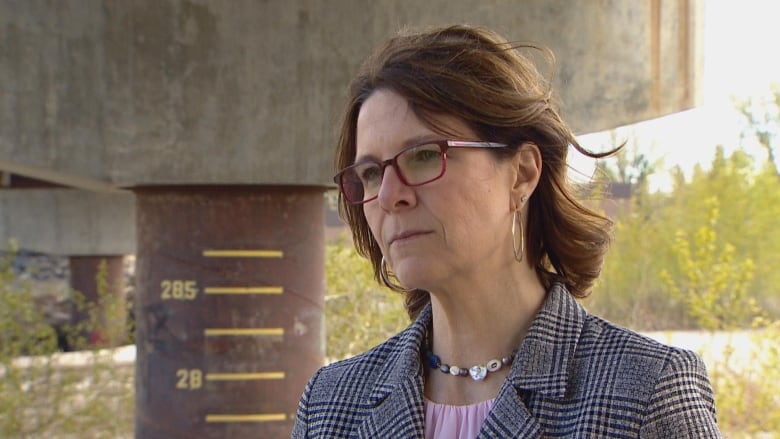
The unfortunate reality is that the system in Alberta has been in place for a very long time, Percy noted. It’s very hard to go back to the beginning and equalize the playing field, he said.
“People in some parts of southern Alberta are going to have to think about limits of growth. If you look at the large, incredible amount of what some might describe as suburban development surrounding Calgary on all sides, maybe that’s not all going to be possible in the future,” he said.
“At least, not in the same way where everyone wants nice greenery around them, and significant water supply. There simply may not be enough to justify it.”
The garden city
When Magrath was in the process of being established in the late 19th century, there was a “garden city” movement taking place in Britain, emphasizing the development of green space and parks in communities.
Magrath adopted the nickname, a stamp of pride tied to its large lots and space for residential gardens, especially given its location within Palliser’s Triangle.
The town won’t be completely isolated from the changing nature of southern Alberta.
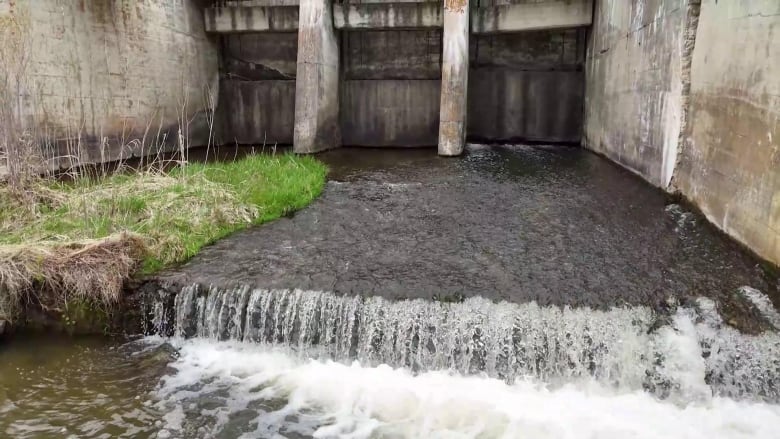
More than 80 per cent of Alberta’s water supply is found in the northern half of the province, but 80 per cent of the province’s demand is in the south.
The water supply is already limited — almost 20 years ago, the province put a moratorium on new water licences for most of southern Alberta. That, in effect, created Canada’s first market-based system to trade water licences.
To some extent, the major export in southern Alberta has been water, converted to vegetation and then into meat, said Rood.
With the warming of Alberta, there may well be a northward expansion of the agricultural zones, he said.
A zone that might have been suitable for one type of agriculture or one type of ranching in 1900 is less appropriate in 2000, and will be even less appropriate in 2050 or 2100, he said.
“We can imagine that what will happen is the higher value users will be able to purchase water licences from willing individuals who may have a lower value application for that,” Rood said.
“I think that growing some of the specialty crops in the zone from Lethbridge to Taber, this will, I think, expand. Whereas growing forages in some of the foothills areas may decrease.”

At the Magrath Museum, Brook Harker points out photos on the wall.
“That’s the old Grant & Davies store. It burned down in a fire, as many stores did of its era. The speed limit, by the way, was about 15 miles an hour,” he said.
Harker is aware that change is inevitable. There’s pride and deep belief in this community’s history and in what it’s contributed to the surrounding region.
But there’s also a recognition that Alberta is changing. There are others in the region who also have perspectives on how the water supply should be used.
“Sometimes, that causes a conflict. Because our first call was for irrigation. If we didn’t have it, we wouldn’t have the water in that area,” he said.
“So, we try. I’m sure there’s an ongoing struggle — to maintain what’s deemed a reasonable balance.”

